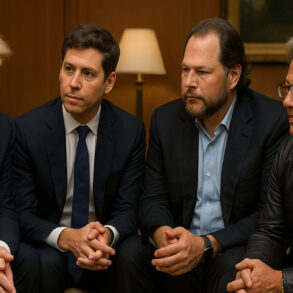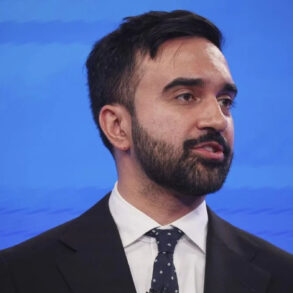In a sharp escalation of nuclear tensions, Russia has officially abandoned the remaining limits of the Intermediate-Range Nuclear Forces (INF) Treaty. Moscow claims the decision was triggered by recent U.S. missile deployments near its borders and a broader Western buildup that threatens its national security. The move follows rising hostilities between Washington and Moscow over Ukraine and could mark the beginning of a renewed arms race.
What Was the INF Treaty?
The INF Treaty was signed in 1987 by the United States and the Soviet Union, banning all ground-launched missiles with ranges between 500 and 5,500 kilometers. The agreement led to the destruction of more than 2,600 missiles and was celebrated as a milestone in ending the Cold War-era nuclear standoff. However, the United States withdrew from the pact in 2019 during President Donald Trump’s first term, citing Russia’s long-term violations. Russia denied the accusations but maintained a unilateral moratorium on deploying the banned weapons.
That moratorium has now ended.
Why Is Russia Withdrawing Now?
Russia’s Foreign Ministry declared the conditions for the moratorium “no longer exist,” accusing the U.S. and NATO of deploying missile systems that pose “a direct, strategic threat.” Moscow pointed to recent U.S. activity, including the transfer of MK70 launchers to Denmark, delivery of the Typhon missile system to the Philippines and Australia, and the use of the Dark Eagle hypersonic system during joint drills in Australia. The ministry also highlighted U.S. firings of Precision Strike Missiles from Palau and their integration into HIMARS and M270 platforms now used in Ukraine and other allied territories.
“These U.S. and allied actions, taken together, result in the buildup of destabilizing missile potentials in regions adjacent to Russia,” the ministry said. “This development dangerously escalates tensions between nuclear powers.”
Deputy Foreign Minister Sergey Ryabkov called the end of the moratorium “a logical and inevitable step,” and former President Dmitry Medvedev posted on X that this was the result of NATO’s “anti-Russian policy,” warning that “further steps” are coming.
Trump’s Role
Just days before the Russian announcement, former President Donald Trump ordered two U.S. nuclear submarines to reposition closer to Russia in response to online nuclear threats made by Medvedev. While the Pentagon has not confirmed the subs’ specific missions or locations, many believe they are carrying missiles with ranges previously banned by the INF Treaty.
This came on top of Trump’s ultimatum for a cease-fire in Ukraine by August 9 or face sweeping new sanctions, including secondary sanctions on Russian oil buyers. Trump told Newsmax, “When you talk about nuclear, we have to be prepared… and we’re totally prepared.”
Trump’s special envoy, Steve Witkoff, is expected to visit Moscow this week to explore a peace deal. But with Russia’s abandonment of the INF limits, the atmosphere surrounding those talks is more tense than ever.
Russia’s Military Moves and Rhetoric
President Vladimir Putin confirmed the deployment of the Oreshnik intermediate-range missile to Belarus, which borders three NATO countries. The missile has a range that would have violated the INF Treaty and is capable of carrying nuclear warheads. Russian media boasted that it could hit Ramstein Air Base in Germany within 15 minutes.
Meanwhile, the Kremlin tried to strike a less aggressive tone than Medvedev. Spokesman Dmitry Peskov said, “Russia treats the issue of nuclear nonproliferation with great care,” and suggested the U.S. submarine movement was not a major escalation.
Still, Russia’s Foreign Ministry warned that “decisions on the specific parameters of response measures will be made by Russia’s leadership,” and many analysts expect deployments to Kaliningrad, the Black Sea, or even Russian bases abroad.
U.S. Response and Third-Party Views
The Pentagon has not yet officially responded to Russia’s treaty withdrawal. However, the U.S. has long accused Moscow of using INF-banned weapons in its war in Ukraine, particularly the Oreshnik missile. American officials argue that Washington was essentially following the treaty alone for years while Russia violated it.
General Philip Breedlove, former head of U.S. European Command, said Russia’s move was expected. “This is a fairly standard approach Russia takes when they’re trying to deter or intimidate the West,” he said. “Every time the West considers a change, like giving new weapons to Ukraine, this is what happens.”
International observers worry this could mark a return to Cold War-style arms racing, especially with the only remaining arms control pact, New START, set to expire next year. Putin already suspended Russia’s participation in that treaty in 2023.
Russia’s abandonment of the INF Treaty limits is part of a broader pattern of deteriorating relations between Moscow and Washington. The two countries are increasingly locked in a high-stakes standoff over Ukraine, cyberattacks, election interference, and NATO expansion. With both sides now moving nuclear-capable assets closer to each other, fears of miscalculation or escalation are growing fast.
Whether Trump’s pressure campaign leads to peace in Ukraine or pushes the conflict into even more dangerous territory remains to be seen. But for now, the arms control structure that once helped keep Europe safe is in ruins, and a new era of uncertainty has begun.
NP Editor: This was intentionally sharp on Putin’s part. Trump has escalated and Putin is responding in kind, and in fact raising the ante. This is high stakes diplomacy.








